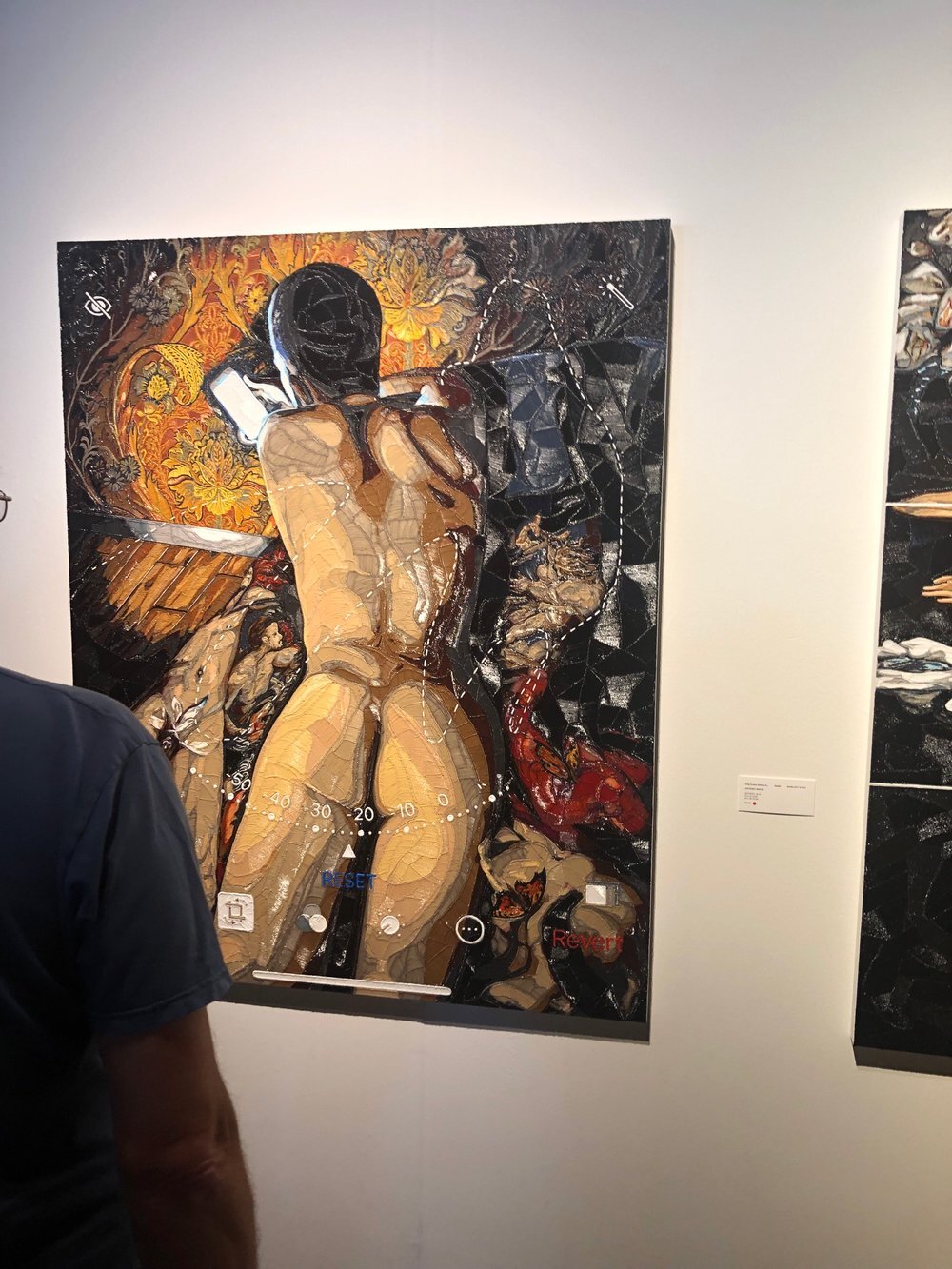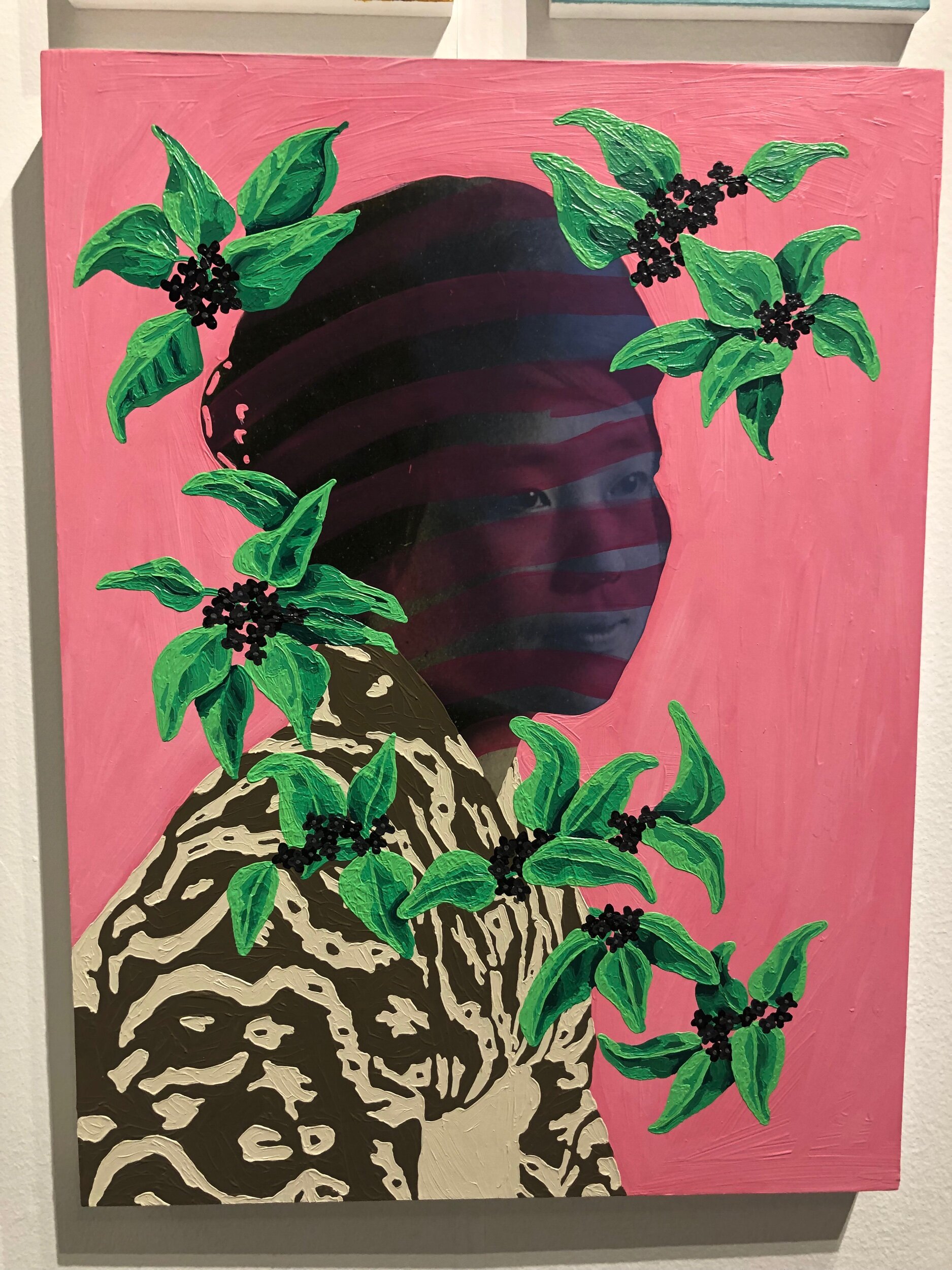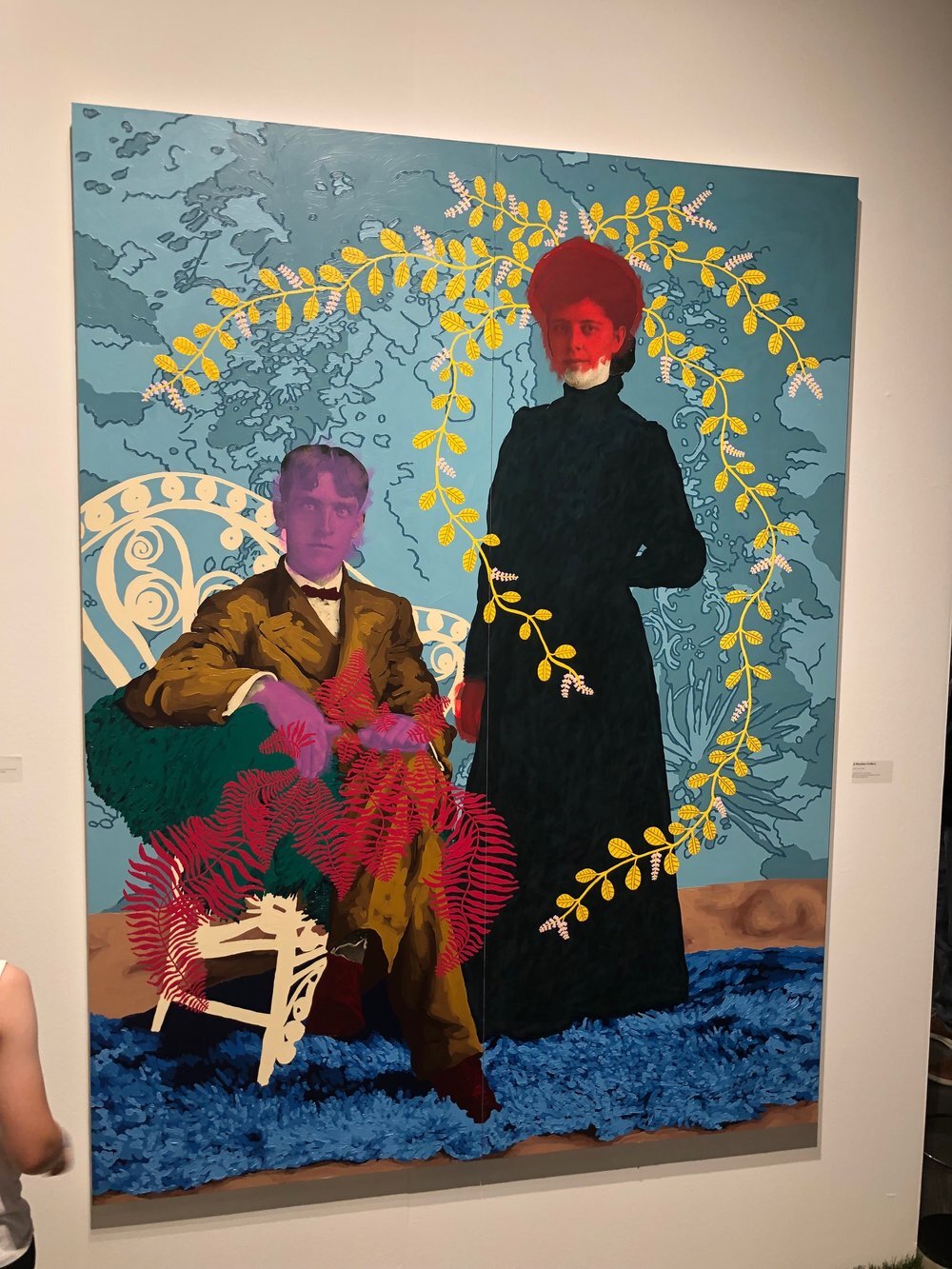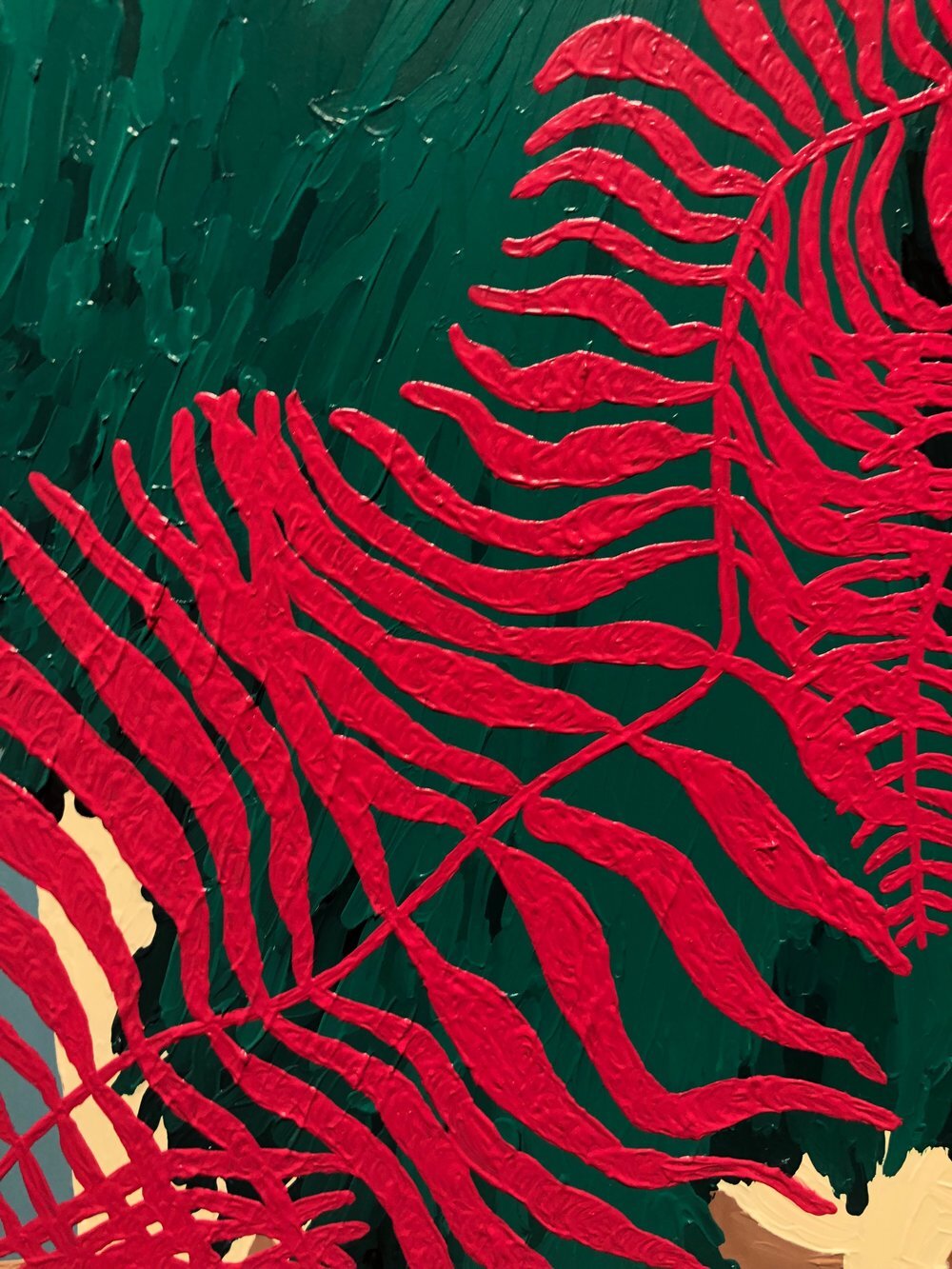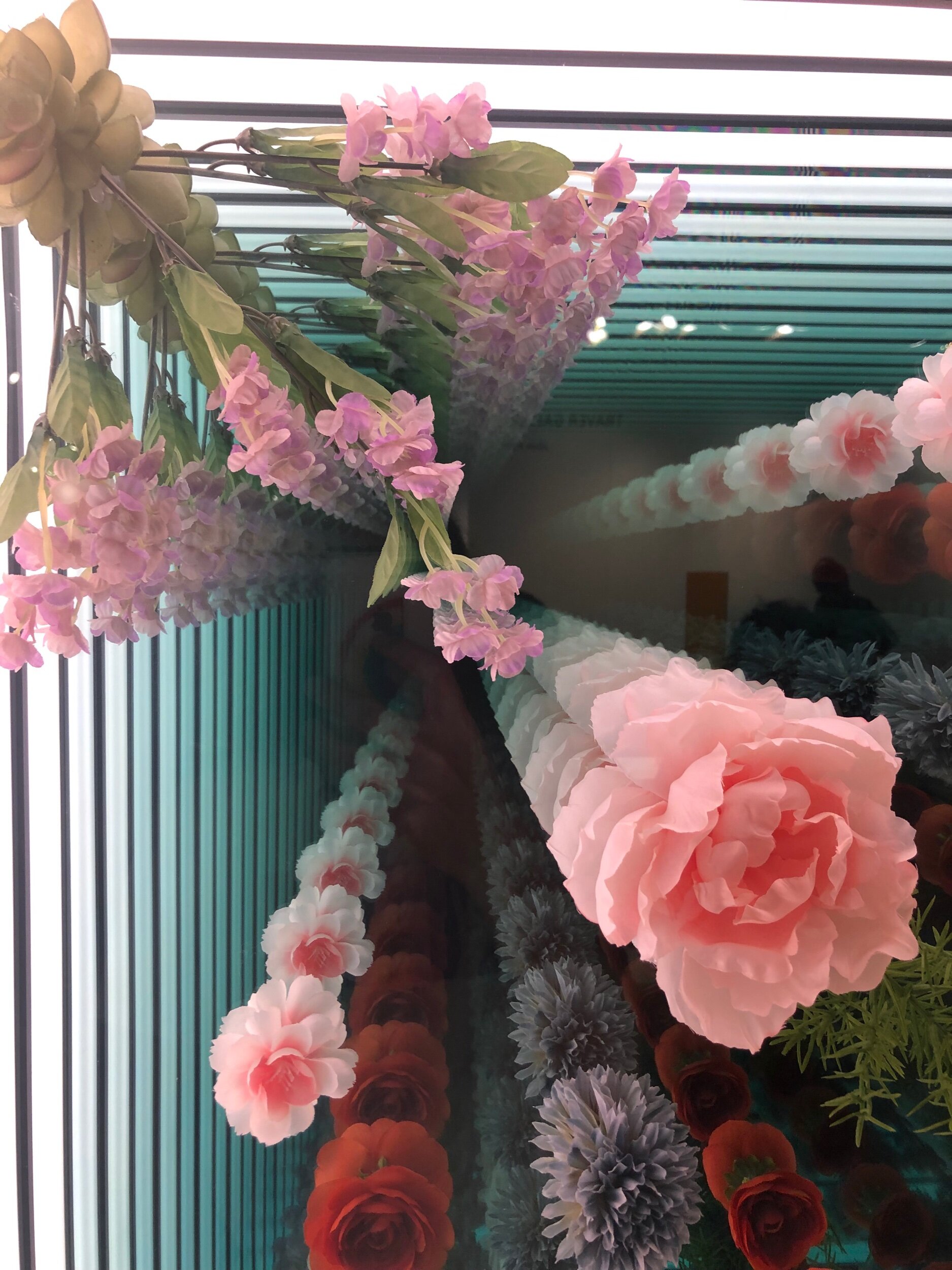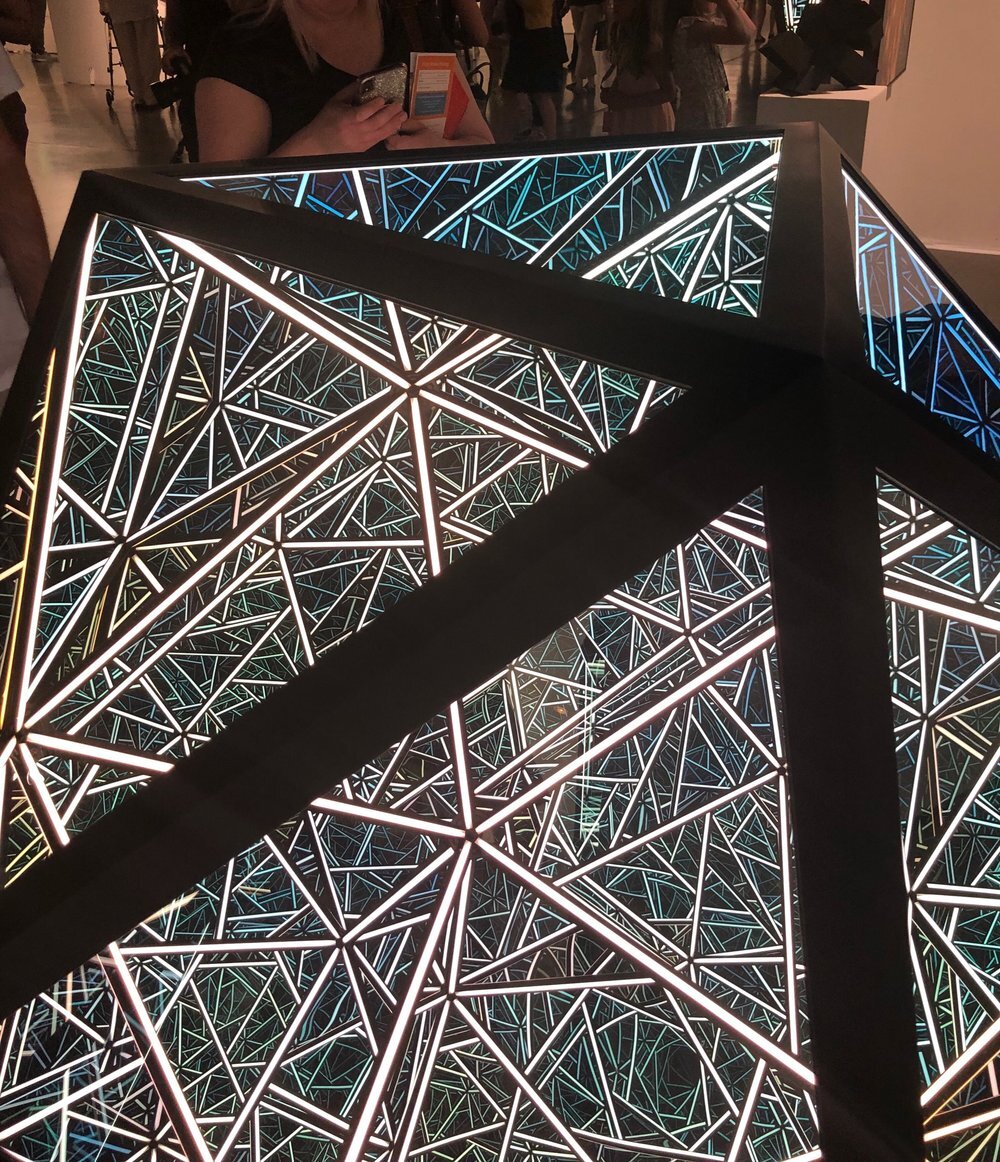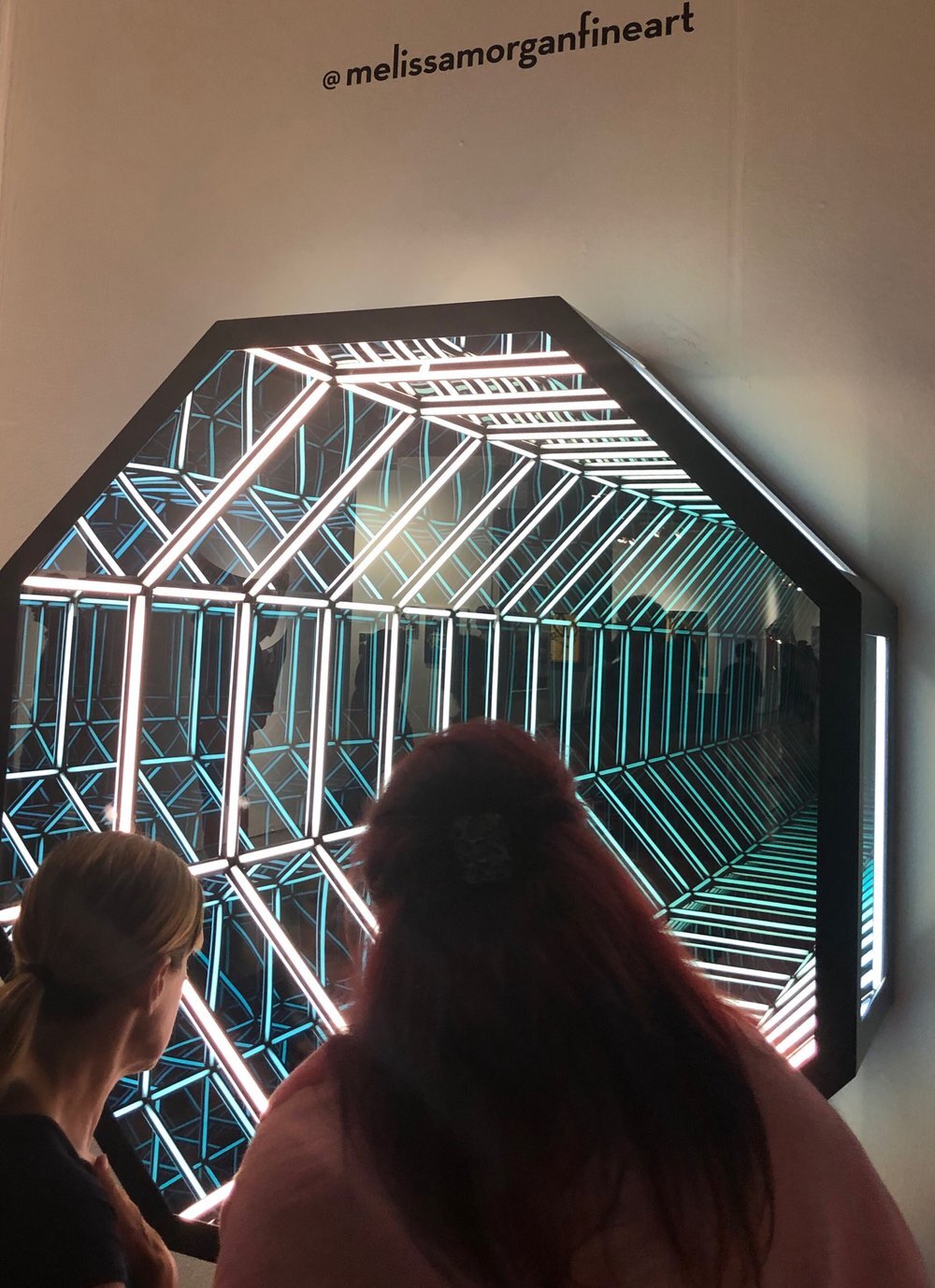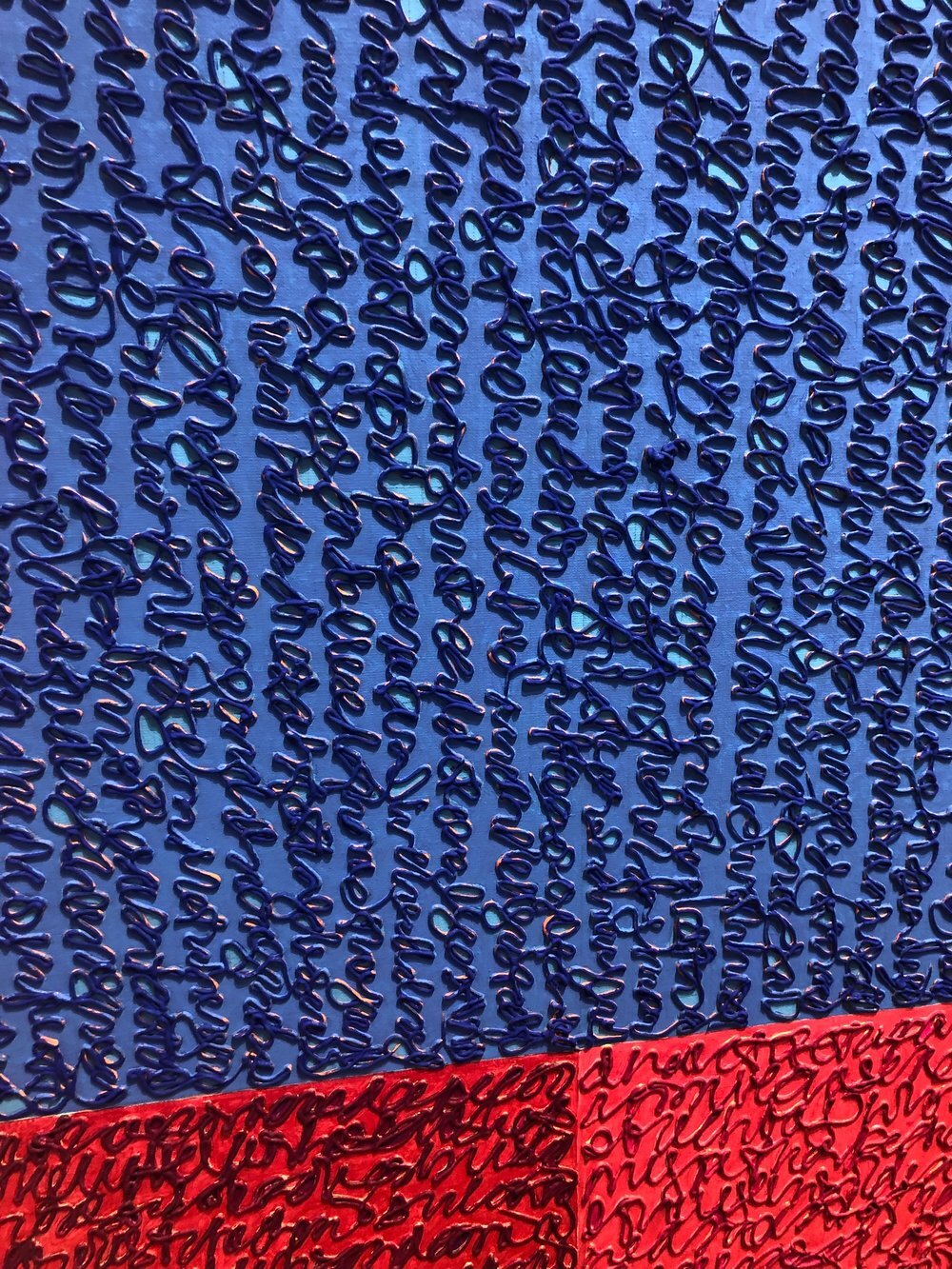Patterns, Flowers, and Portals: Seattle Art Fair 2019
August 10, 2019
This, the fifth iteration of the Seattle Art Fair, featured over 100 International galleries showing work organized around the curatorial theme “Here Explodes the Wunderkammer,” a metaphor for 21st century context collapse. Director Nato Thompson writes of Wunderkammers, Kunstkammers, or cabinets of curiosities, “These encyclopedic collections moved rapidly between art, science, curious collectibles, and even the occult without a blink.” They mirror both memes and the emerging field of Creative Research in their insatiable eclecticism, and provide a point of entry for art made in this post-digital, post-truth, post-sincerity world.
A docent tour crowds around the work of Anthony White near the Fair entrance.
Positioned prominently near the Fair entrance were two pieces by rising star Anthony White. They are big baroque affairs each overlaid with the familiar iPhone camera grid. The two pieces, one of which was acquired by the Frye Art Museum, foreground the Fair as emphatically, unavoidably, informed by the dynamic relationship between humans and their screens. Several trends emerged this year, including a preoccupation with patterns, flowers, and portals.
Anthony White (Greg Kucera)
Anthony White (Greg Kucera)
Yohei Yama (Vin Gallery)
Sean Newport (Hashimoto Contemporary)
Ko Kirk Yamahira (Russo Lee Gallery)
Long regarded as inferior to so-called High Art, decorative patterns and floral accents have returned, this time updated for the 21st century. As Artificial Intelligence explodes around us we are learning that one of the hallmarks of the human mind is our superior pattern recognition. There's something deeply satisfying about looking at a pattern, letting your eyes trace lines or get lost in the repetition of shapes. While looking, you develop a reverence or regard for the thing beheld, which can then be extended to the world around us. Anthony James' sculptures of glass and light show us a mirage of crystalline geometrical patterns receding into an infinite void. Yohei Yama's paintings mimic topographical maps or the flight paths of birds and are loaded with a gentle, sweeping energy. The structural pattern of canvas, the warp and the weft, is cleverly laid bare in the work of Ko Kirk Yamahira. Dan Gluibizzi is incorporating dot patterns into his new work where before there have been minimal color wash backgrounds. And Sean Newport takes pattern to a sharper, more menacing end with his sculptural wall hangings of brightly hued pyramid clusters.
Dan Gluibizzi (Russo Lee Gallery)
Yohei Yama (Vin Gallery)
Daisy Patton (J. Rinehart Gallery)
Elsewhere, flowers and plants reigned supreme. Of course, at a time of ecological collapse and plummeting biodiversity, it is only sensible to harbor love and care for our leafy friends. They are lush and fragile and when we regard them as such we expand our capacity to care for fragile things. Daisy Patton's playfully colorful paintings on reworked vintage photographs feature decorative floral accents. They are a fresh and juicy update on nostalgia— perfect for a world in which past, present, and future have been flattened into a single retrievable archive. Peter Gronquist’s shallow shadow box is lit at the perimeter with artificial flowers sandwiched between one-way mirrors. The fake flora recedes seemingly to infinity. A captivating video by Lee Lee-Nam shows tiny CGI military planes dropping bombs on the Mona Lisa, which then explode into colorful bouquets of flowers obscuring Da Vinci's masterpiece. It is mesmerizing to watch and refreshing to see machines of war converted to instruments of beauty.
Daisy Patton (J. Rinehart Gallery)
Daisy Patton (J. Rinehart Gallery)
Peter Gronquist (Hashimoto Contemporary)
Lee Lee-Nam, 'Ruins Mona Lisa' at Simyo Gallery, Seattle Art Fair 2019
Joe Rudko (Davidson Gallery)
Joe Rudko (Davidson Gallery)
Joe Rudko (Davidson Gallery)
Anthony James (Melissa Morgan Fine Art)
Anthony James (Melissa Morgan Fine Art)
Artists also displayed a strong affinity for portals. The theme is aligned with discourse around cyber space and meat space, and echo escapist fantasies at a time of deep global anxiety and uncertainty. Not only do Anthony James' sculptures deal heavily in pattern, they also provide a spellbinding view into the abyss. Similarly, Peter Gronquist shows us a simulated alternate reality portal with his wall mounted flower piece. In his meticulously cut and reassembled vintage photographs, Joe Rudko juxtaposes slivers of moments from disparate times and places, like looking directly into a tear in space and time. Louise P. Sloane's large square paintings are divided into quadrants with another square superimposed on the four. The artist has added textural, letterlike forms that read like a dispatch from an alternate civilization— vaguely familiar but still unintelligible.
Louise P. Sloan (Spanierman Modern)
Louise P. Sloan (Spanierman Modern)
The time now, “as the world disappears into our phones,” is more urgent than ever. Climate Change is at the tip of our collective tongues and “has erupted into a global paradigm— connecting coral reefs to exhaust pipes to skyscraper-size ice chunks melting away.” The project of expanding our scope to understand these nuanced relations was front and center this year. While the Seattle Art Fair, and art exhibitions more generally, lacked a clear intended audience, that only helped to highlight the cross-sectional nature of the art world— a scene generally comprised of artists, collectors, and enthusiasts from all walks of life all united by an appreciation for art. By being for no-one in particular, it was more open to everyone in general. And there was enough art that everyone was bound to find something they love, which is exactly the fun of it— being awed, mesmerized, shocked, amused, tantalized, and challenged. Artists will always respond idiosyncratically to their time and place and today their “relationship to a collapsing of fields provides a hypnotic lens to view the horizon of our knowledge.”
Anthony James (Melissa Morgan Fine Art)



